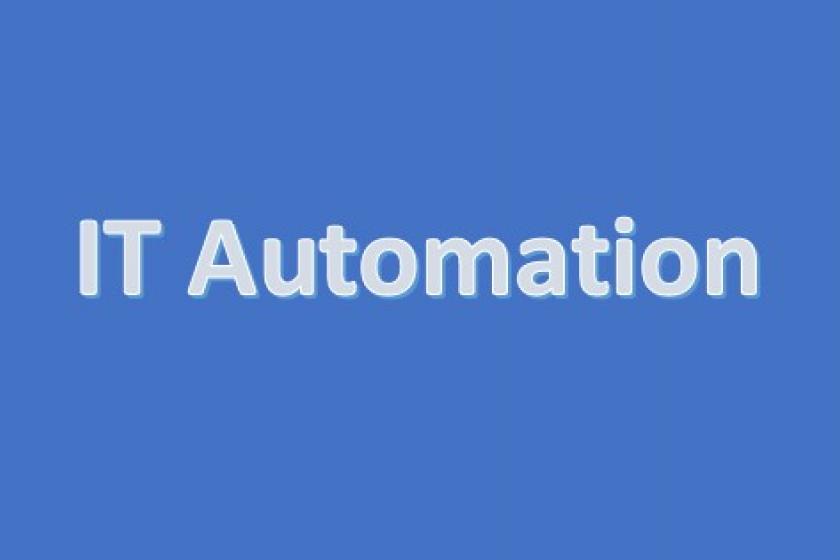Network Automation: Accelerating Adoption Through Compliance
Network automation is the key to providing consistent performance across a company’s infrastructure. But establishing a compliant baseline will provide the foundation for effective utilization across the cloud.
July 16, 2021

For enterprise IT teams, investing in new capabilities like automation is critical for proper network management. This past year, global IT leaders cited quality improvement and workforce productivity as their top reasons for implementing automation within the network. As quality standards evolve in line with fluctuating IT infrastructure needs, automation will continue to be deployed in order to manage growing complexities – however, network compliance must be the main starting point.
Configuration compliance across both cloud and traditional infrastructures provides a foundation for automation and support consistency across the entire network. When a network device is compliant, it ensures a baseline knowledge of the device's features and how it operates, which builds confidence that an automated change will not cause unintended behavior. Without compliance, there is a fear that automation leads to "breaking the network" and the loss of control, leading to outages and impact to the business. While perceived as a delicate system, critical networks are not supposed to be fragile, so ensuring that a network is compliant will, in turn, address these concerns and allow automation to be implemented where it is needed most.
To successfully strengthen the network and capitalize on automation, we must establish compliance by making it a top priority across hybrid cloud networks and ensuring networks are configured appropriately and as intended.
Navigating compliance in multi-cloud adoption
By 2022, over 90% of enterprises worldwide will be relying on a mix of cloud software to meet their infrastructure needs. Therefore network teams will have the responsibility to ensure a consistent level of performance across all of the company’s infrastructure. Automation is the key to such performance, but establishing a compliant baseline will provide the foundation needed for effective utilization across the cloud. By ensuring a compliant network, IT teams can take action based on regulatory guidance at the core of their strategy. As a result, network engineers will be better equipped to modernize with automated features in order to successfully manage cloud-based network services. These automated features can then help enterprises solve problems resulting from multi-cloud complexity while also leveraging tools that support cloud data center connections.
Further, a modernized approach to compliance must include integration with network automation processes and applying this process from traditional networking into the cloud. This provides a consistent standard across both infrastructure types, which in turn increases the stability and security of the network. This level of security will increasingly be sought after as cyber threats within the network increase, and enterprises look to further protect themselves against potential threats.
Ensuring consistent, timely validation during configuration
In regards to device validation, it is critical to ensure that a device stays compliant by preventing changes that would ultimately break existing compliance measures. Therefore in order for networking teams to build the confidence needed to ensure networks continue to stay configured as intended, they should start by shifting from a reactive to proactive configuration compliance approach. IT teams can adopt a more proactive process for network compliance by preventing a configuration change from being applied if it violates the configuration standard – instead of sticking to a reactive approach that relies on fixing compliance issues after a break has occurred. By supporting compliance standards for both CLI and API-based networks, IT members can ensure operational consistency across the entire network infrastructure. They can do so by rapidly detecting non-compliance devices and immediately bringing them back into compliance with automated remediation. Maintaining their compliance can be done through an automation process that validates any proposed changes for compliance before it is applied.
Manually maintaining device configuration is also not a timely nor efficient approach, which is why many organizations are looking to automate certain aspects of this process. Considering the amount of information and configurations to sift through, it's difficult to feel completely confident in making automated network changes. Achieving network compliance across both traditional and cloud networks can help provide the assurance needed for successful end-to-end network automation, which starts with establishing a strong compliance framework. Establishing an industry-aligned strategy from the start can ensure consistent network configuration and validation across devices, especially as IoT continues to take precedence in enterprise technology investments. As time goes on, proactively validating network configuration changes according to compliance rules will be critical to avoiding the configuration "drift" away from the set compliance, which can cause outages and loss of productivity.
In order to fully reap the benefits that come with such automation tools, establishing compliance across both traditional and cloud networks are essential areas of focus – especially for maintaining a competitive edge within the industry. Modern network compliance along with network automation capabilities will equip networking teams with the tools and confidence they need to architect and manage the most stable and secure networks possible.
Rich Martin is Senior Technical Marketing Engineer at Itential.
About the Author
You May Also Like




